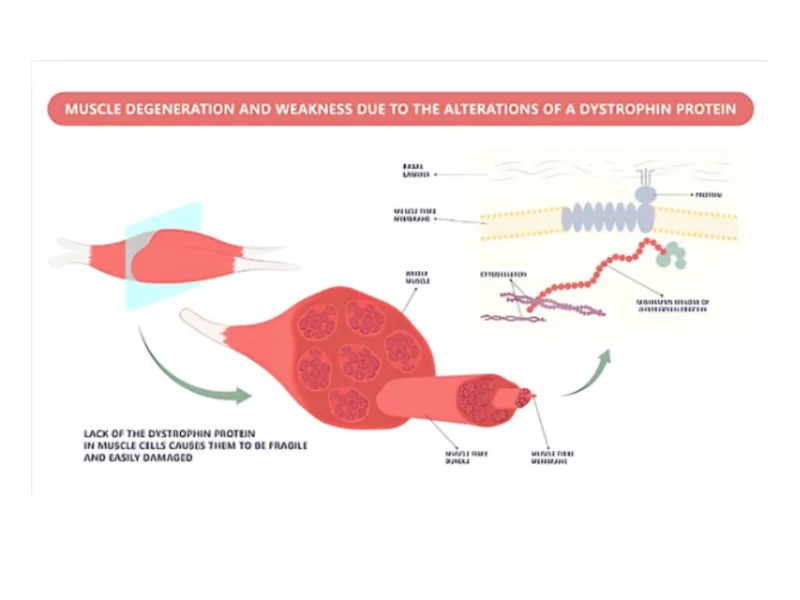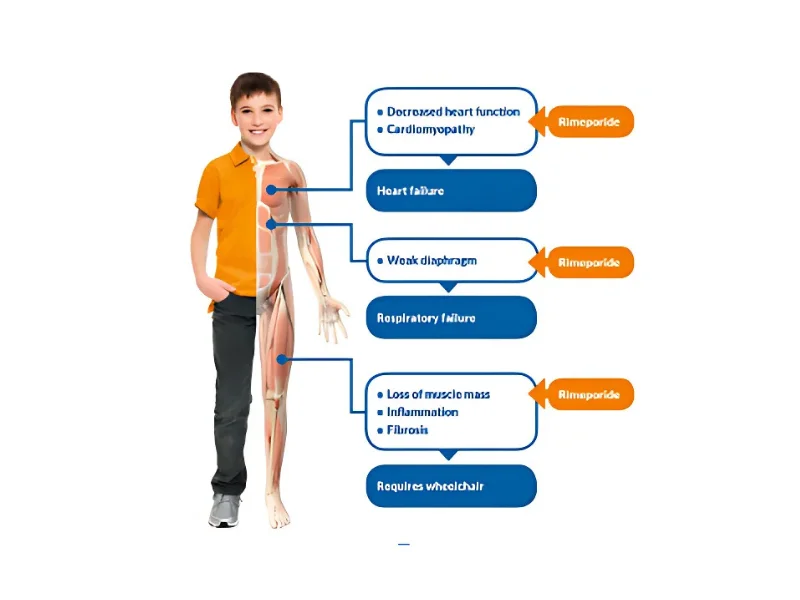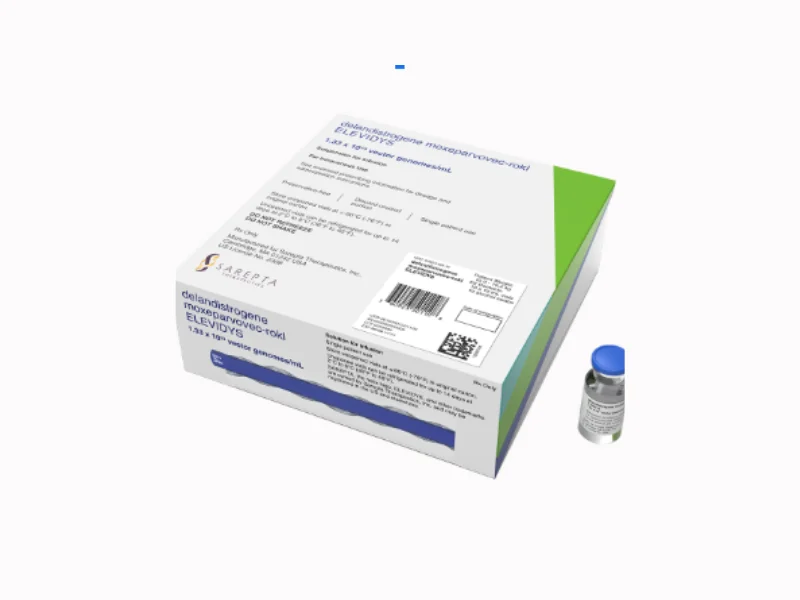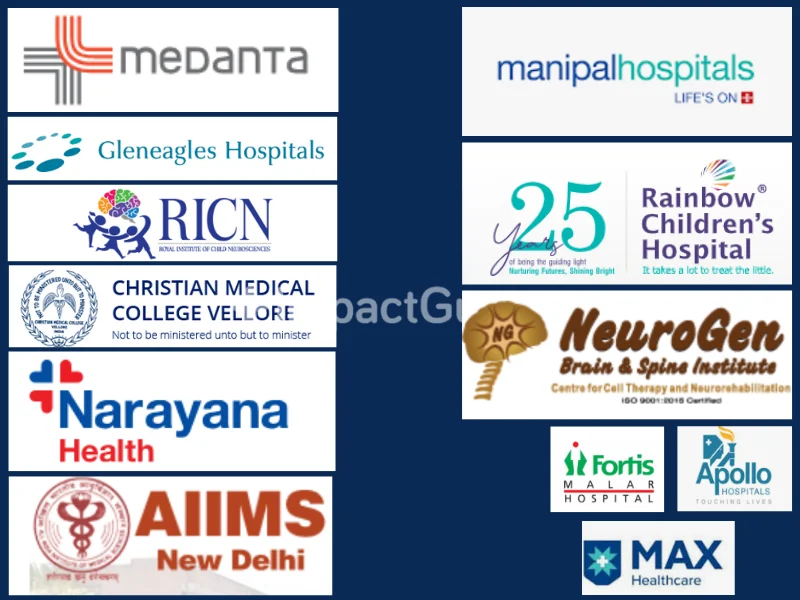The human body is an amazing mechanism. For centuries, humans have tried to learn more about how it works. Yet, despite our efforts, there are times when some parts of the body don’t function as they should- the body’s muscles or tissues do not grow or work properly, instead, they die. One such genetic disorder is Duchenne Muscular Dystrophy (DMD).
Table of Contents
- What is Duchenne Muscular Dystrophy (DMD)?
- What Makes Dystrophin So Important
- Symptoms of DMD
- Duchenne Muscular Dystrophy Treatment Options
- Challenges of Accessing DMD Treatment in India
- Best Hospitals for DMD Treatment in India
- India has several healthcare centres committed to treating Duchenne muscular dystrophy:
- Future Treatment For Duchenne Muscular Dystrophy
- Support and Resources
- So, is there hope? Absolutely!
What is Duchenne Muscular Dystrophy (DMD)?
Duchenne muscular dystrophy (DMD) is a genetic disorder that causes progressive muscle weakness and degeneration. Out of over 30 types of muscular dystrophy, DMD accounts for about half of all cases. Named after the French neurologist Guillaume-Benjamin Duchenne, who first described it in 1861, DMD primarily affects boys due to the inheritance of deleted exons from the birth mother’s X chromosome.
- A woman carrying the defective DMD gene has a 50% chance of passing it on to her children.
- DMD affects 1 in every 3,500-5,000 male births worldwide.
What Causes Duchenne Muscular Dystrophy?
Duchenne muscular dystrophy is caused by a mutation in the DMD gene, which is responsible for producing dystrophin. Dystrophin is like a shock absorber. It helps the muscles handle everyday wear and tear of muscles from activities like walking, running, or even breathing.
Discover the latest advancements in Duchenne Muscular Dystrophy treatment in 2025, offering hope for better management and improved outcomes for patients.

Read More- Degloving Injury: Types, Symptoms & Treatment in India
What Makes Dystrophin So Important
Dystrophin is a key component of the dystrophin-glycoprotein complex (DGC), a group of proteins that connect the cytoskeleton (internal muscle cell structure) to the extracellular matrix (outside the cell).
This connection anchors the muscle fibres and helps stabilize the muscle cell membrane during contraction and relaxation.
Prevents Muscle Cell Damage
During muscle movement (contraction/relaxation), immense force is generated, which can stress the cell membrane.
Dystrophin acts as a shock absorber, protecting muscle fibres by distributing mechanical stress across the cell membrane.
Without dystrophin, the membrane becomes fragile, leading to tears, leakage, and eventual cell death.
Maintains Calcium Balance
Dystrophin helps maintain the integrity of the muscle fibre membrane, preventing unwanted calcium ions from leaking into the cell.
Excess calcium can activate enzymes that break down proteins and further damage the muscle cells. Dystrophin facilitates the transmission of force generated inside the cell to the surrounding tissue.
Proper force transmission is essential for coordinated muscle movement and strength.
Dystrophin helps preserve muscle cell function by
- Preventing the accumulation of cellular damage.
- Supporting healthy muscle regeneration after physical activity.
Without dystrophin, muscle fibres undergo progressive degeneration, as seen in conditions like Duchenne Muscular Dystrophy (DMD).
When dystrophin is missing or defective (due to genetic mutations), muscle cells experience:
- Damage in fragile membranes
- Protein degradation caused by calcium imbalance
- Reduced structural stability and force transmission.
- Progressive muscle degeneration and weakness.
This is why dystrophin is crucial for muscle health, and its absence leads to severe conditions like Duchenne Muscular Dystrophy.
So, when the DMD gene is mutated:
- The body makes little or no dystrophin.
- Muscles become fragile.
- Over time, muscle cells break down and die, leading to a loss of muscle function.
Also Read- Degloving Injury: Types, Symptoms & Treatment in India
Symptoms of DMD
Duchenne Muscular Dystrophy (DMD) symptoms usually appear between ages 2-5 and worsen over time. Common signs include:
- Decreased heart function
- Cardiomyopathy
- Heart failure
- Weak diaphragm
- Respiratory failure
- Loss of muscle mass
- Inflammation
- Fibrosis
- Requires wheelchair
Eventually, DMD can affect vital functions like heart and lung activity, often requiring medical interventions. Over time, the heart function decreases, leading to cardiomyopathy and potential heart failure.
Additionally, weakened respiratory muscles, like the diaphragm, result in breathing difficulties, often progressing to respiratory failure. Inflammation and fibrosis in the muscles further deteriorate mobility, eventually requiring affected individuals to rely on wheelchairs for movement.

Duchenne Muscular Dystrophy Treatment Options
Finding a cure for Duchenne Muscular Dystrophy is challenging, but advancements in medical science offer hope through therapies that slow disease progression and improve life expectancy.
Gene Therapy: Elevidys
One of the most promising breakthroughs is Elevidys, a gene therapy approved by the FDA. It introduces a modified version of the dystrophin gene to produce a functional protein, aiming to stabilise and preserve muscle function.
- FDA Approval: In June 2024, Elevidys was approved for all patients with DMD aged 4 and older, regardless of whether they can walk or not.
- Elevidys Cost and availability: The therapy is expensive, with a one-time administration costing approximately $3.2 million (around ₹29 crore). This makes affordability a significant challenge, especially in countries like India.

Exon-Skipping Therapy
Exon skipping works like putting a “patch” over the broken part of the gene to help it function better.
- How it works: Scientists use antisense oligonucleotides (AOs) to skip over the faulty exon. This helps the body produce a shorter but functional version of dystrophin.
- Example: If a person has an exon 22-41 deletion, exon-skipping therapy targets exon 42 to restore the connection and help the body produce dystrophin.
While therapies like Elevidys and exon skipping address the genetic cause and improve life expectancy, physiotherapy for DMD patients helps maintain muscle strength and flexibility. It also reduces the risk of joint contractures and improves quality of life.
Challenges of Accessing DMD Treatment in India
Gene therapy and other advanced treatments are extremely expensive. For example:
- Elevidys gene therapy costs approximately ₹29 crore.
- The lack of comprehensive insurance coverage in India makes such treatments inaccessible to most families.
Limited Availability
While Elevidys is FDA-approved in the U.S., it is not yet widely available in India. Regulatory approvals, high manufacturing costs, and distribution challenges delay access.
Duchenne Muscular Dystrophy Support Organization
Organizations and healthcare systems in India are working to improve awareness and affordability. Fundraising campaigns and collaborations between Indian and global research institutions offer hope for the future.
Best Hospitals for DMD Treatment in India

India has several healthcare centres committed to treating Duchenne muscular dystrophy:
- Apollo Hospitals
- Max Hospitals
- Manipal Hospital, Delhi
- BGS Gleneagles Global Hospitals
- Fortis Malar Hospital, Chennai
- NeuroGen Hospital
- Rainbow Children’s Hospital
- AIIMS (All India Institute of Medical Sciences)
- Christian Medical College (CMC)
- Narayana Health, Bengaluru
- Medanta, Gurgaon
- Royal Institute Of Child Neuroscience (Ahmedabad)
These hospitals provide a combination of therapies, including physiotherapy, genetic counselling, and access to advanced treatments.
Future Treatment For Duchenne Muscular Dystrophy
What Can We Hope For?
Indian researchers are actively working to develop drugs to access affordable gene therapy for Duchenne in India.
Efforts are underway to enhance the efficacy of antisense oligonucleotide-based therapies, which could offer cost-effective solutions for patients with specific exon deletions.
Globally, advancements in gene therapy and exon-skipping technologies continue to progress. Recent clinical trials have shown promising results, with some therapies demonstrating increased dystrophin production in patients.
For example, Wave Life Sciences reported positive interim data from a mid-stage trial for its DMD treatment WVE-N531, indicating substantial dystrophin expression in boys with DMD amenable to exon 53 skipping.
Support and Resources
Several organizations and hospitals in India are dedicated to supporting DMD patients and their families:
- Dystrophy Annihilation Research Trust (DART): Focuses on research and awareness related to muscular dystrophy.
- Indian Association of Muscular Dystrophy (IAMD): Provides support and resources for patients and caregivers.
- Leading Hospitals: Institutions like NeuroGen Hospital in Mumbai offer regenerative medicine approaches for muscular dystrophy.
Your easy path to a solution:
Many families facing DMD often struggle to afford the high Elevidys Cost and availability of treatments, therapies, and ongoing care. So, what can they do?
Many turn to crowdfunding platforms and supportive organisations for help. Fundraising for Duchenne Muscular Dystrophy treatment on ImpactGuru, allows families to share their stories and raise the necessary funds to manage this challenging condition.
Organisations like Parent Project Muscular Dystrophy (PPMD) and the Muscular Dystrophy Association (MDA) are leading the way in providing resources, emotional support, and advocacy. They connect families with valuable information, raise awareness, and fund research that can change lives.
We all know that DMD is undoubtedly a tough condition to face. While a complete cure for muscular dystrophy is still in the works, researchers are tirelessly finding treatments to slow down the disease. Isn’t that a reason to stay hopeful?
With early intervention, medical support, and continuous advancements, the outlook for those with Duchenne Muscular Dystrophy is improving. What’s more important? A strong community and support system can make a world of difference. Families, doctors, and caregivers all play a role in helping individuals with live fuller, more meaningful lives.

So, is there hope? Absolutely!
With the right care and a positive mindset, we can look forward to a future where those affected by DMD lead fulfilling lives—full of moments that matter and dreams that are still within reach.
Sources:
Duchenne Muscular Dystrophy (DMD)
Current and emerging treatment strategies for Duchenne muscular dystrophy












